-
About
- About Listly
- Community & Support
- Howto
- Chrome Extension
- Bookmarklet
- WordPress Plugin
- Listly Premium
- Privacy
- Terms
- DMCA Copyright
- © 2010-2025 Boomy Labs
Listly by Nick Kellet
Source: http://www.nickkellet.com/2012/11/invisible-advances-lookers-look-lurkers-lurk/

While most people don’t want take an action for a wide range of reasons, marketers want lurkers to engage whether it’s with their website, content marketing or social media initiatives. (Here are 21 reasons people lurk.) Here are three lurker corollaries to help you consider how lure lurkers to action and five ways to get lurkers to engage.

Are you discouraged because you have tons of followers, friends and connections on your social media communities but conversations always involve the same people? Do you wonder why others don’t jump in? You are not alone. There’s a name for this phenomenon – the 90-9-1 rule.
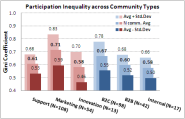
Dr. Michael Wu, Ph.D. is Lithium's Principal Scientist of Analytics, digging into the complex dynamics of social interaction and online communities. He's a regular blogger on the Lithosphere and previously wrote in the Analytic Science blog. You can follow him on Twitter at mich8elwu.

Dr. Michael Wu, Ph.D. is Lithium's Principal Scientist of Analytics, digging into the complex dynamics of social interaction and online communities. He's a regular blogger on the Lithosphere and previously wrote in the Analytic Science blog. You can follow him on Twitter at mich8elwu.

I left my first comment on Chris Brogan's blog a few weeks ago. And if you want to know a secret, I was scared. Speaking up for the first time on a new community is often pretty intimidating. Don't get me wrong, I've been reading Chris' blog for years, lots of us have.

Richard Millington is the founder of FeverBee Limited, an online community consultancy, and The Pillar Summit, an exclusive course in Professional Community Management. Richard's clients have included the United Nations, The Global Fund, Novartis, Oracle, OECD, BAE Systems, AMD and several youth & entertainment brands.
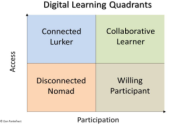
This time I'll put myself on a web participation map by using some blog posts that have touched me. First I take a post of Wolfgang Greller. He considers himself as a veteran moocer, a migrant that comes again and again, and seems to enjoy the way he participates.

Video of Holly's presentation added 9th May 2012: In order to see this content you need to have both Javascript enabled and Flash Installed. Visit BBC Webwise for full instructions. If you're...
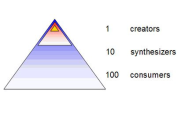
New research from the BBC suggests that one of the web's most common rules of thumb no longer applies -- and that online engagement has risen dramatically in recent years. But is its surprising conclusion based on a dramatic misinterpretation of the rule itself?
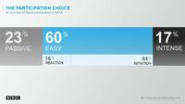
The BBC have just released some interesting research around participation online. The findings (the result of a "large-scale, long-term investigation into how the UK online population participates using digital media today") have raised a little controversy since they seem to...
![Is the 90-9-1 Rule for Online Community Engagement Dead? [Data]](http://media.list.ly/production/1949/142011/90-10-1-rule-online-community-participation_185px.png)
Is the 90-9-1 Rule for Online Community Engagement Dead? [Data] There is a rule that has floated around in the social media world for quite some time called the Rule of Participation Inequality or the 90-9-1 Rule.

My husband is a Twitter lurker. In the three years since he set up his account, he's tweeted a grand total of 13 times. He regularly shows up on my SocialBro dashboard as 'inactive'. If I followed the advice of the many 'how to spring clean your social media account' posts that seem to proliferate around this time of year, I'd ditch him.

Ted Rubin is a leading social marketing strategist and the chief social marketing officer at Collective Bias. In 2009, Rubin started using the term ROR, Return on Relationship™, a concept he believes is the cornerstone for building an engaged multi-million member database. His book, Return on Relationship, is out in August.
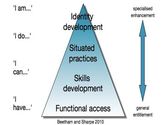
For my 'Spotlight stage' session at Online Educa (15:35 on Thursday 4th) I'm exploring 'Re-humanising eLearning'. This is a theme very much inspired by Catherine Cronin's keynote at ALT-C this year in which she spoke, among other things, about the value of online identity and open practice.
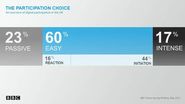
The BBC have just released some interesting research around participation online. The findings (the result of a "large-scale, long-term investigation into how the UK online population participates using digital media today") have raised a little controversy since they seem to indicate that the long-term model or view of participation online, the 1,9,90 rule, is outmoded.

Tom Cross, director of security research, Lancope Recent news events such as the WikiLeaks and Edward Snowden disclosures have brought the insider threat into clear focus. It is important to understand that there are various types of insider threats and that each one requires a different approach from an information security standpoint.
Lurking is the number one activity on the Web...and is therefore extremely important to design for. The latest story on lurking at GigaOm (they are covering this topic nicely): Thanks to Quora, now you can't read anonymously Lurking is the number one activity on the Web.

Quora, which I believe is one of the most over-hyped startups, has introduced Views on Quora, which essentially shares which users have read each post. This is no different than the passive sharing that has been promoted by Facebook or Path.

Quora today is introducing a feature that shows which of its users have read each Quora post, and how they found it. It's another move by a social Web service to share passive activities, making the simple act of looking at a page on Quora something that other people can easily trace.
They say that only 1 percent of people on the Internet create all the content, while the other 99 percent passively show up to view it. But these days, lurking is becoming much more of an active behavior than it was before, because even just looking at content is something that gets reported back to other people.
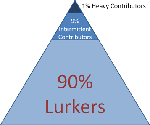
Summary: In most online communities, 90% of users are lurkers who never contribute, 9% of users contribute a little, and 1% of users account for almost all the action. All large-scale, multi-user communities and online social networks that rely on users to contribute content or build services share one property: most users don't participate very much.
Summary: The economic divide is a non-issue, but the usability and empowerment divides alienate huge population groups who miss out on the Internet's potential. The "digital divide" refers to the fact that certain parts of the population have substantially better opportunities to benefit from the new economy than other parts of the population.

As Yahoo! has been gobbling up many social media sites over the past year ( Flickr, upcoming, del.icio.us) I often get asked about how (or whether) we believe these communities will scale. The question led me to draw the following pyramid on a nearby whiteboard: The levels in the pyramid represent phases of value creation.

It's an emerging rule of thumb that suggests that if you get a group of 100 people online then one will create content, 10 will "interact" with it (commenting or offering improvements) and the other 89 will just view it.

In October, with 2015 lurking just around the corner, it's frightening to think just how much customer service and the customer experience are impacting the reputation and bottom lines of brands and organizations. While satisfying customer experiences can have scary-good results (increasing customer acquisition, retention, brand loyalty and advocacy), just a single poor customer experience can lead to the unexpected demise of even the longest customer relationship.
